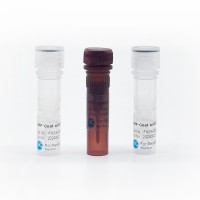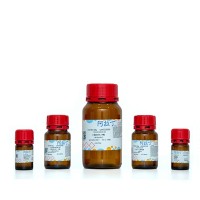Conjugation of Colloidal Gold to Proteins
The ability to conjugate proteins to colloidal gold sols provides a wide variety of probes for electron microscopy. In addition to antibodies, protein A, lectins, enzymes, toxins, and other proteins have all been conjugated to colloidal gold (1 – 7 ). The nature of the interaction between the colloidal gold and the protein is poorly understood. Colloidal gold is a negatively charged lyophobic sol. The surface of the particle displays not only electrostatic characteristics, but also hydrophobic properties. In conjugating proteins to a gold sol, the electrostatic interactions must be reduced so that the hydrophobic interactions can prevail. This is accomplished by adjusting the pH of the gold sol to approx 0.5 pH unit higher than the pI of the protein being conjugated. Roth (7 ) gives a table of optimum pH for a number of commonly used proteins. Once the pH is properly adjusted, the net charge of the protein is zero or slightly negative. This prevents the aggregation of the protein owing to electrostatic attraction while maintaining the hydrophobic interactions and facilitates the conjugation of the protein to the gold.
![预览]()






